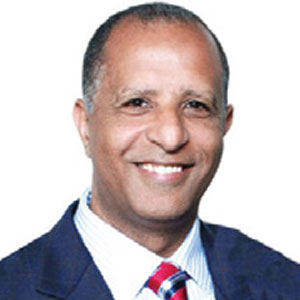THANK YOU FOR SUBSCRIBING

Cloud Considerations in Asset Management Intensive Organizations
HartLevy, Director, Management Consulting-EAM & MRO Spares Inventory, Hitachi Consulting


HartLevy, Director, Management Consulting-EAM & MRO Spares Inventory, Hitachi Consulting
Four Areas to Evaluate Prior to Pursuing that Path
Newer workforces expect greater access to a wide variety of data availability via the internet and through mobile devices. The Asset Management Cloud continues to expand that transformation to organizations that are prepared.
“IT organizations need to consider the introduction of Cloud Asset Management as a “re-implementation” or replacement of their current solutions in Asset Management”
Most believe that Cloud technology offers organizations the ability to expand their offerings by leveraging the SaaS (Software as a Service) offered by Cloud applications and reduce cost of procuring and maintaining ERP solutions. An online survey of Gartner clients found that a total of 47 percent of organizations plan to move their core ERP systems to the cloud within five years.
CIOs developing a Cloud Strategy, need to conduct an in-depth evaluation technically and operationally when pursuing the path of replacing the current Asset Management solutions.
• Asset Management Requirements
• Standardization of Processes
• Cloud and 3rd Party Apps
• Overall Cloud Strategy
Asset Management Requirements
Organizations that have less complex maintenance processes, such as facilities, should find Cloud Asset Management solutions a viable alternative to “on premise” managed solutions.
Companies that are in an industry that is considered “asset intensive” often require more complex solutions, possible third party integrations and potential customizations. Asset Intensive industries include Metals/Mining, Oil and Gas, Pulp and Paper, etc. These asset intensive industries will likely need to consider a comprehensive list of requirements prior to defining a Cloud Strategy.
As ERPs introduce their Asset Management solutions, they may not have all the current functionality as the legacy ERP or CMMS solution. They may not even offer the same level of integration into the ERP including Projects, Supply Chain and Operations.
A significant number of IT organizations have not been able to successfully make a business case to replace legacy stand-alone CMMS systems with well integrated ERP solution. This lack of adoption has cost many IT organizations hundreds of thousands of dollars to develop and maintain the required integration.
Because of this resistance to change, and need for third party integration and potential customization, asset intensive companies may need to consider a hybrid approach to cloud computing. This means a possible hybrid strategy that initially adopts Cloud such as Finance or SCM while maintaining legacy systems.
Standardization of Processes
Cloud applications do not always readily support or allow customizations or extensions. The approach tends to be “Out of the Box”hat implies that each business site needs to be willing to adopt a series of standard processes. The concept of “we call it this” and “they call it that” will need to be addressed.
IT organizations need to consider the introduction of Cloud Asset Management as a “re-implementation” or replacement of their current solutions. There should be a plan that includes all facets of an implementation such as evaluating business requirements, data conversions, extensions, customizations and replacement of third party solutions.
The standardization of processes and data will become a prominent factor. This could be interpreted as a positive step as well as a challenge for the IT organization to facilitate. Support from executive management is critical.
While this may require a broader implementation, the opportunity can be leveraged to review outdated or misaligned maintenance and supply chain business process. Over the past several years, many industries have acquired myriad new companies, all of which may have their own unique approaches to the similar business process. Some of these acquisitions have included legacy software solutions that need to be consolidated under a single solution.
Many large organizations that have been successful at re-implementation typically appoint a team of Subject Matter Experts (SME’s) that represent different maintenance organizations.
Check Out: Software Asset Management Companies
Cloud and Third Party Apps
Those organizations that require integration into other third party systems such as Mobile Devices, EHS, and RFID, Fuel systems, GIS, RCM or compliance /regulatory requirements applications will need to reach out to these software vendors and assess their ability to integrate into Cloud services. There may be significant gaps as some suppliers may not have Could services readily available. This may be a game changer and impact the ability for the organization to easily move into the Cloud. It may also require organizations to find new suppliers that offer cloud applications.
Asset Management organizations that have widely distributed assets, such as rigs, pipelines and utilities should evaluate their need for constant connectivity to the Asset Management solution. Current design of Cloud technology is to function only in a connected mode.
Overall Cloud Strategy, the impact and priority
Asset Management should be included as a critical component in any Cloud strategy. Non asset intensive industries that do not have complex requirements are good candidates for Cloud implementation.
CIOs need to consider the following regarding a Cloud Replacement for Current Asset Management: Is your Asset Management/Maintenance Open to Change?
•Moving from current solutions
•Standardize Business Processes to “Out of the Box”
•The business case to justify the shift in technology
•Change Management for the organization and users
Does the Cloud technology meet the requirements essential to the Maintenance Organization?
• Regulatory Compliance
• Reporting and Analysis
• Third Party Applications
• Mobile Computing
Asset intensive industries that wish to leverage SaaS (Software as a Service) technologies via the Cloud should start the planning process soon. It will likely be a transformation over a period of years and perhaps be a hybrid approach that eventually leads to a complete transformation to a Cloud solution with low risk, high value and increased user adoption.
Weekly Brief
I agree We use cookies on this website to enhance your user experience. By clicking any link on this page you are giving your consent for us to set cookies. More info
Read Also
Navigating Compliance Challenges in ESG AML and Digital Onboarding
A Vision for the Future: Automation, Robotics, and the Smart Factory
The Rise of Hyper Automation
Transforming Business Operations with Robotic Process Automation
Combining Automation with AI to Achieve Human-Like Interaction
Implementing RPA - 5 Ultimate Prerequisite
Incorporating the power of recognition into our vendors' sustainability journey
Elevating Guest Experience with Data





















